Polar has announced today a new heart rate chest strap, undercutting slightly their higher-end H10 strap with a less expensive offering that ditches the onboard storage, while still maintaining the trio of connectivity choices (ANT+/Bluetooth Smart/5kHz). Essentially, it’s Polar’s perfectly priced strap to counter the Wahoo TICKR and Garmin HRM-DUAL chest straps.
I’ve been using the strap for the past few days to see how it performs. Though, like most chest straps these days, it pretty much does exactly what you’d expect it to do, and accurately too. Since it doesn’t have any ‘fancy’ features like internal storage or running efficiency metrics, it’s relatively straightforward to use and test, and give you my initial thoughts.
Now one twist on this strap is that like the H10, it actually does retain Polar’s newish SDK functionality. This means that it’s ideal for some of Polar’s B2B partners to leverage for various applications beyond just simple heart rate such as ECG and HRV data. Also, with the 5kHz connectivity, it’ll work with all those gym treadmills and machines that still somehow don’t have Bluetooth or ANT+ connectivity in them.
Finally, I’ll attempt to keep this post efficient. After all, from a consumer standpoint (non-developer) it’s just a strap that transmits your heart rate on multiple frequencies. Sure, it has compatibility with apps like Polar Beat and Polar Flow…but that’s not really any different than any other Bluetooth HR strap.
The Basics:
The Polar H9 strap comes with two components: The chest strap itself and the modular pod that pops into it. The strap itself is their SoftStrap branded lineup, which most folks find pretty darn comfy (myself included). It’s adjustable in size from really small to pretty darn big. It’s also easily replaceable in case you’re one of those people that go through chest strap bands like I go through cookies.
Note the strap does have some differences to the H10. For example, the H10 includes these grippy dots, whereas the H9 doesn’t. Also, the H10 includes a clip on/off clasp, whereas the H9 you just slide it through a little loop.
Meanwhile, the pod is a starkly different grey color – something I haven’t seen from Polar’s historically black pods. Either way, the color matches the DCR Cave’s photo/unboxing table well.
On the back of the pod you’ll find the small door for opening up the CR2025 battery compartment. This coin cell battery should last you about a year with 1-hour’s worth of daily usage.
After which you pop open the door and pop in a new coin cell battery. Simple as that:
The strap will automatically activate once it detects heart rate signal between the two electrodes. This occurs when you snap the pod into the strap and then put it on your chest. Alternately, you can give the two sensing pads a small massage with your fingers and it’ll wake up the strap. When it doesn’t detect a human, it’ll go back to sleep automatically.
There’s no visible lights or such on the strap itself once powered on. Instead, it’ll just start broadcasting concurrently across the three formats:
– ANT+ heart rate (unlimited connections)
– Bluetooth Smart heart rate (one concurrent connection)
– 5kHz analog heart rate (unlimited connections)
The only thing that’s notable here on the Bluetooth Smart side is that the Polar H10 allows for dual Bluetooth Smart connections versus just the singular concurrent connection on the H9. My bet here is this is more of a differentiating limitation by Polar than a hardware one, as I suspect it’s the same chipset. The main use case for concurrent (dual) Bluetooth Smart connections is where you want to concurrently connect your chest strap to something like a Polar watch (which only does Bluetooth Smart for current models) as well as an app like Zwift on iOS/Apple TV (also only Bluetooth Smart). You can use unlimited ANT+ connections with a single Bluetooth Smart connection at the same time.
For most people this is more than enough, but if you’re a big enough geek like me – it’s a limitation I occasionally hit up against.
In any case, to demonstrate the three connectivity options – first, here’s a Garmin Edge series device connected via ANT+. You can see it in the pairing menu, as well as the connectivity type (and, the ANT+ Manufacturer ID Polar is assigned of 123, each company gets their own ANT+ ID).
Then, we’ll layer in a connect to Zwift on an iPhone via Bluetooth Smart:
And finally, for the pièce de résistance, I’ll connect to it with my treadmill via analog 5kHz connectivity (showing pulse at 74). My treadmill doesn’t support any of the newfangled ANT+ or Bluetooth Smart stuff.
Cool, huh?
Now, at this point that’s basically all you need to know about the strap. It’s now broadcasting your heart rate and doing the things you need it to do. However, you can use it with Polar’s apps. Again, it doesn’t have any storage or accelerometers in it, so it’s purely broadcasting heart rate. But Polar’s apps each have different purposes. Typically Polar Flow is for adding your device in for firmware updates and sync (on other products), whereas Polar Beat is for doing workouts.
If we pair it up to the Polar Beat app, then they’ve got a variety of heart-rate training programs as well as the ability to record your trainings and then sync them with various 3rd party apps. At present it shows up as an H7 strap, but I’m sure by the end of the day it’ll quietly show as an H9. You’ll notice there’s the option to enable/disable ANT+, broadcasting at all, and GymLink (the analog bits). Kinda cool.
Ok, with that – I think we’ve covered all there is to know about it connectivity-wise and basic use. After usage, like any other chest strap, I recommend simply washing it off with water. I often just do this in the first minute or so of taking a shower after a workout. Then simply hang it up to let it dry. The entire strap and pod is waterproof to 30-meters.
Initial Accuracy Data:
Here’s data from an initial workout. This was an indoor workout because the weather is miserable here right now and was basically hailing blueberries like an angry tornado yesterday.
First up is the data from the indoor bike. In this case I had a boatload of other sensors onboard, all carefully positioned so that they don’t interfere with each other. In total, I had all the following:
A) Polar H9 Strap (Upper chest)
B) Garmin HRM-DUAL Strap (lower chest)
C) Polar OH1 Plus optical HR sensor (upper left arm)
D) MioPod optical HR sensor (upper right arm)
E) Garmin Vivoactive 4 watch (left wrist)
Phew. Data file extravaganza!
Here’s what that looks like:
As you can see, that’s pretty boring. The Vivoactive 4 accuracy mostly sucked like a drunk pedestrian, but everything else was almost identical. Some minor variances between the two optical HR sensors, but by and large pretty darn similar across all of them. This included a few sprint efforts, and a variety of changes in intensity. The H9 is in teal connected to the FR945 as an ANT+ chest strap, while the HRM-DUAL is in orange connected to the Peloton bike. The other colors are shown to the right.
You can see the entire set of data, inclusive of zooming in and out as you see fit here. Ultimately, it’s pretty boring. There’s virtually no difference between them.
Now, I had plans to have an indoor treadmill interval workout for you this morning as well. Except, I’ve spent the last hour troubleshooting Zwift and Bluetooth Smart sensor connectivity. So, no run now. Maybe later once I finish placing the entire setup underneath a high-speed bus out front of the studio.
(Note: All of the charts in these accuracy sections were created using the DCR Analyzer tool. It allows you to compare power meters/trainers, heart rate, cadence, speed/pace, GPS tracks and plenty more. You can use it as well for your own gadget comparisons, more details here.)
Product Comparison:
I’ve added the Polar H9 strap into the product comparison database, within the heart rate sensor section. That’s got boatloads of heart rate straps in there, though for the purposes of comparison below I’ve slated it against the Wahoo TICKR series, Garmin HRM-DUAL, 4iiii Viiiiva, and Polar H10 – all being chest straps. If you want to compare it against optical sensors like the Polar OH1+, Wahoo TICKR FIT, or Scosche 24, you can do that in the product comparison database too.
Still, to make your life easier, I’ll distill this entire table down to basically three lines:
Polar H9 vs H10: The H10 has storage for workouts sans-device (meaning, it’ll sync them from strap to phone). It also has accelerometer data that you probably won’t ever use, it does dual Bluetooth Smart connections.
Polar H9 vs Garmin HRM-DUAL: The Garmin strap has dual Bluetooth Smart connections like the Polar H10, but lacks the 5kHz analog signal for gym treadmills/equipment. Both are priced the same. Essentially the main difference here is deciding which use case fits you best.
Polar H9 vs Wahoo TICKR or TICKR X: Assuming the base TICKR (not the TICKR X), they’re the same for ANT+/Bluetooth Smart connectivity, but the Polar H9 has the analog 5kHz that the TICKR doesn’t. The TICKR is cheaper. If looking at the TICKR X, it has offline storage like the Polar H10 and a bunch of running focused metrics you might use 2 or 3 times (only with their app).
Polar vs 4iiii Viiiiva: As usual, the 4iiii Viiiiva gets basically no respect. It’s got more software features than everyone above for about the same price. I personally don’t find the strap all that comfortable though. It doesn’t have dual-Bluetooth Smart or 5kHz, but does have bridging of ANT+ accessories to Bluetooth Smart (including footpods/power meters/etc…). Plus offline storage. I think it also farts Canadian rainbows too.
Make sense? Good. Here’s the table of them all:
| Function/Feature | Polar H9 | 4iiii Viiiiva | Garmin HRM-DUAL | Polar H10 | Wahoo TICKR (Original) |
|---|---|---|---|---|---|
| Copyright DC Rainmaker - Updated October 8th, 2024 @ 5:34 am New Window | |||||
| Price | $59 | $79 | $69 | $89 | $49 |
| Product Announce Date | January 29th, 2020 | Jan 7th, 2013 | Jan 30th, 2019 | Jan 5th, 2017 | Jan 6th, 2014 |
| Product Availability Date | January 2020 | July 2013 | Jan 2019 | Jan 2017 | Apr 2014 |
| Measurement Type | ECG | ECG | ECG | ECG | ECG |
| Typical Placement | Chest Strap | Chest Strap | Chest Strap | Chest Strap | Chest Strap |
| Battery Life | 1 year | 200 hours | 3.5 years | 1-2 years | 350 hours |
| Battery Type | Coin Cell CR2025 | Coin Cell CR2032 | Coin Cell CR2032 | Coin Cell CR2025 | Coin Cell CR2032 |
| NFC Capable | No | No | No | No | No | HR Transmission | Polar H9 | 4iiii Viiiiva | Garmin HRM-DUAL | Polar H10 | Wahoo TICKR (Original) |
| ANT+ | Yes | Yes | Yes | Yes (with firmware update) | Yes |
| Bluetooth Smart | Yes | Yes | YES (DUAL BLE CHANNELS) | Yes (dual BLE channels) | Yes |
| Dual concurrent ANT+/BLE | Yes | Yes | Yes | Yes | Yes |
| Analog for gym equipment | Yes | No | No | Yes | No |
| Usable HR data underwater | Yes (with certain older 5kHz watches) | No | No | YES (WITH CERTAIN OLDER 5KHZ WATCHES) | No |
| Bridging ANT+ to Bluetooth Smart | No | Yes | No | No | No |
| Can record activity in memory | No | yes | No | Yes | No | Additional Data | Polar H9 | 4iiii Viiiiva | Garmin HRM-DUAL | Polar H10 | Wahoo TICKR (Original) |
| Run Pace | No | No | No | No | No |
| Run Cadence | No | No | No | No | No |
| Run Economy/Metrics | No | No | No | Only to RaceFox app | No |
| Cycling Cadence | No | No | No | No | No |
| Cycling Power Meter Estimation | No | Can pass through ANT+ PM's | No | No | No |
| Valid HRV/RR data | Yes | Yes | ANT+ Yes, BLE No | Yes | Yes |
| Configurable Sport Modes | No | Sorta | No | Sorta | No |
| Displays HR Zones | No | No | No | No | No |
| Requires Bluetooth Smart Phone for Configuration | No | Yes (for bridging only) | No | Yes | No |
| Firmware Updateable | Yes | Yes | Yes | Yes | Yes (iOS/Android) | App | Polar H9 | 4iiii Viiiiva | Garmin HRM-DUAL | Polar H10 | Wahoo TICKR (Original) |
| Can show workout afterwards | No | Yes | No | Yes | No |
| Can sync files/workout to 3rd party | No | Yes | No | Yes | No |
| More Info | Link | Link | Link | Link | Link | Purchase | Polar H9 | 4iiii Viiiiva | Garmin HRM-DUAL | Polar H10 | Wahoo TICKR (Original) |
| Amazon | Link | Link | Link | Link | Link |
| Backcountry.com | Link | ||||
| REI | Link | Link | |||
And again, remember you can make your own comparison chart with all the heart rate straps/sensors I’ve reviewed (optical and chest straps) in the product comparison database here.
Summary:
The Polar H9 fits a gap in Polar’s lineup for offering a tri-band chest strap at an affordable price, undercutting the price of their own product (the H10) to put something on the market that should actually do well competitively since it really does stack up well against the Garmin HRM-DUAL and Wahoo straps. Each strap has their own minor differences that you’ll have to ultimately decide which strap, if any, makes the most sense for your specific needs. But ultimately, I’d be more than happy to use any of them on a daily basis.
I’ve really got no complaints about the H9. Sure, I’d love to have seen two Bluetooth Smart connections like the H10 – but that’s product differentiation for ya. And sure, I’d love to have seen storage of workouts like the H10 – but I’m not actually a fan of how Polar’s H10 workout storage functionality works logistically. So that’s not a big loss (I find it cumbersome compared to how others work). I’d note the Polar OH1 Plus’s offline functionality is awesome – and one of my daily testing sensors out there because of that simplicity.
As for accuracy, things look pretty good at this point for what I’ve tested. More to come there. While my treadmill workout as planned crapped out, I did actually start the workout before I ran out of time – and within that realm things were matched up 1:1 against the HRM-DUAL. Again, hopefully this afternoon I’ll be able to win the battle against electronic devices and get that workout knocked out for real, with more juicy running interval data.
Until then – as I said up above – this seems like a nicely landed product by Polar. Good price, good functionality, and based on their longstanding success of existing chest straps that the vast majority of people seem to really like (myself included).
Found This Post Useful? Support The Site!
Hopefully you found this review/post useful. At the end of the day, I’m an athlete just like you looking for the most detail possible on a new purchase – so my review is written from the standpoint of how I used the device. The reviews generally take a lot of hours to put together, so it’s a fair bit of work (and labor of love). As you probably noticed by looking below, I also take time to answer all the questions posted in the comments – and there’s quite a bit of detail in there as well.
If you're shopping for the Polar H9 or any other accessory items, please consider using the affiliate links below! As an Amazon Associate I earn from qualifying purchases. It doesn’t cost you anything extra, but your purchases help support this website a lot.
Here's a few other variants or sibling products that are worth considering:
I've also put together a quick list of some of my favorite or most compatible accessories for this unit:
And of course – you can always sign-up to be a DCR Supporter! That gets you an ad-free DCR, access to the DCR Quarantine Corner video series packed with behind the scenes tidbits...and it also makes you awesome. And being awesome is what it’s all about!
Thanks for reading! And as always, feel free to post comments or questions in the comments section below, I’ll be happy to try and answer them as quickly as possible. And lastly, if you felt this review was useful – I always appreciate feedback in the comments below. Thanks!


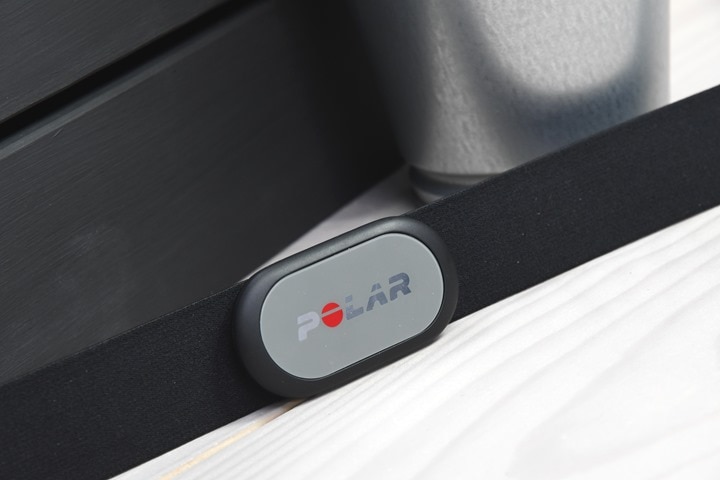
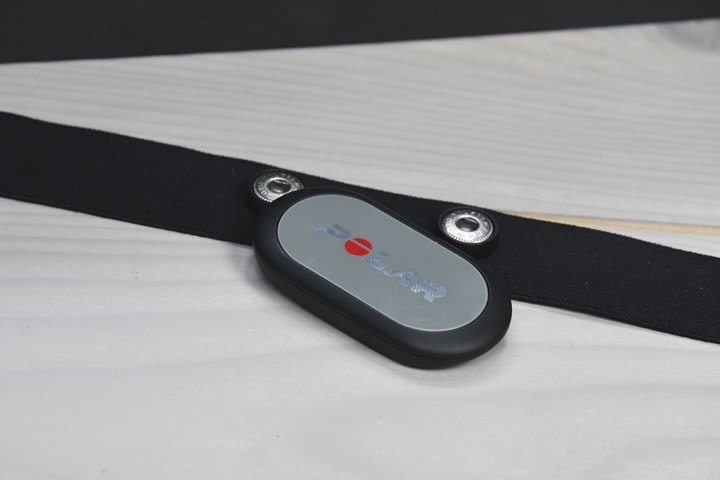
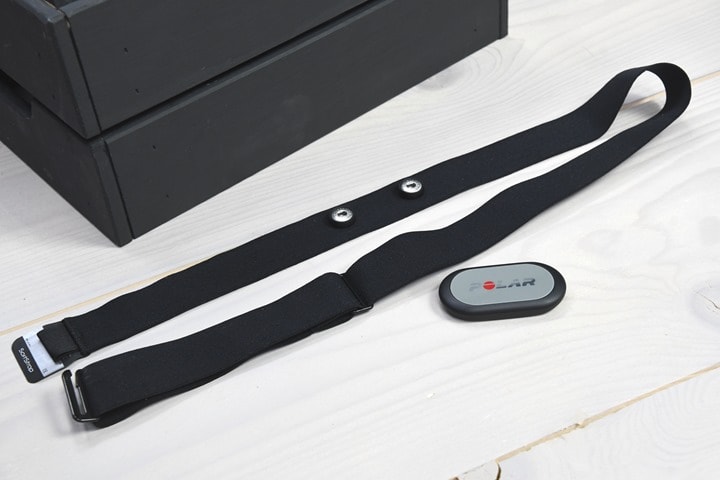
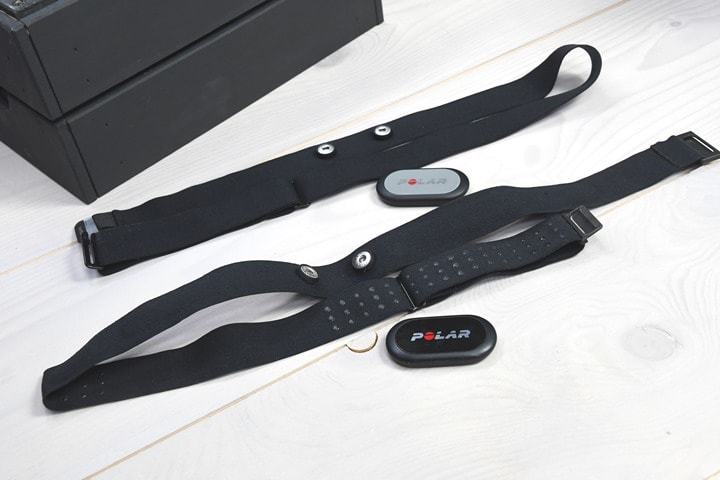
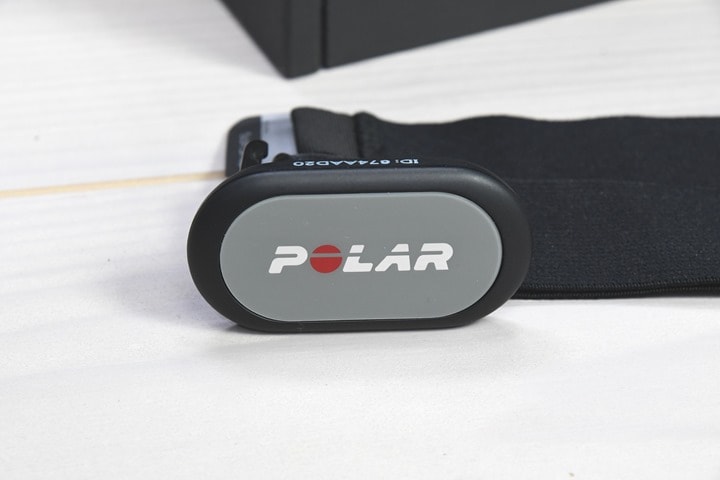
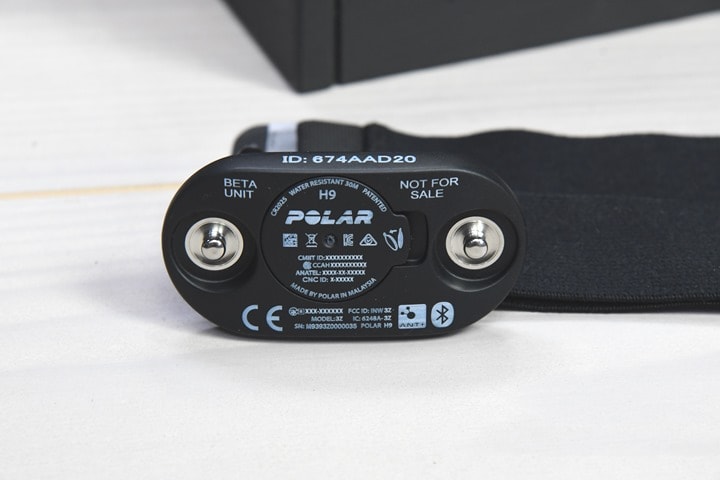
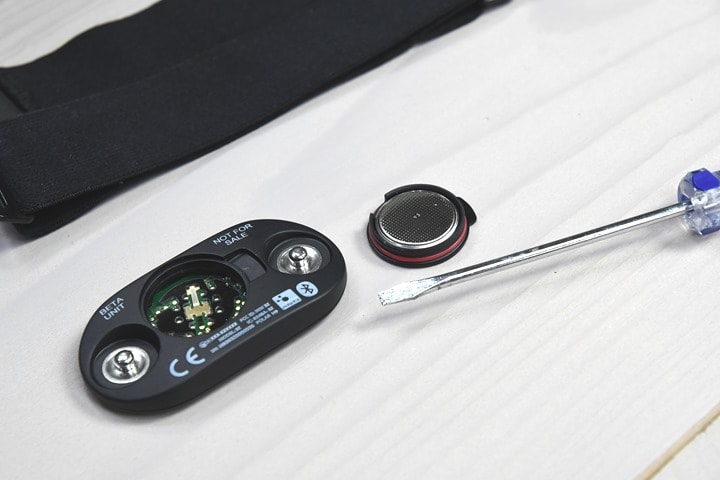
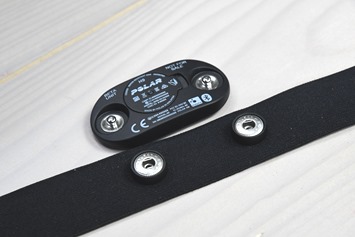
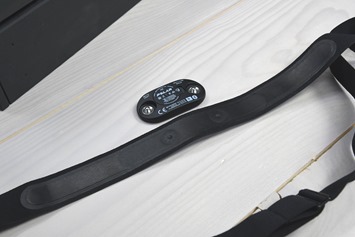
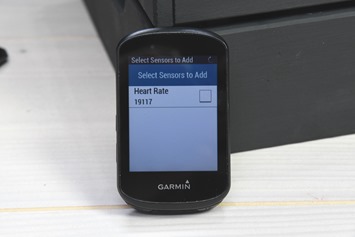

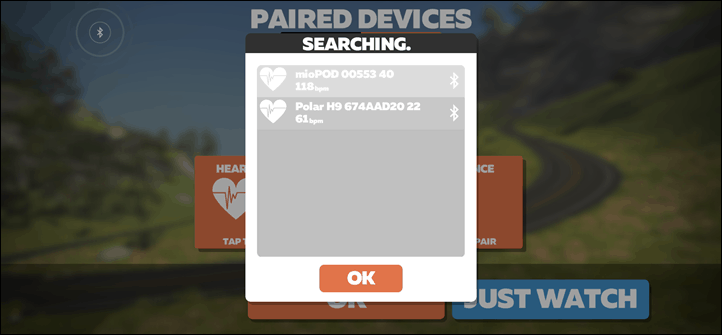

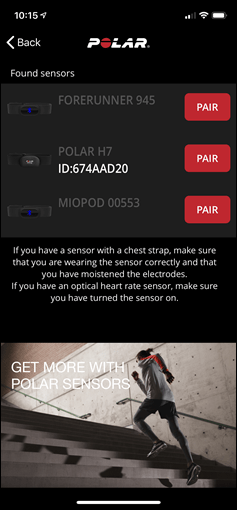
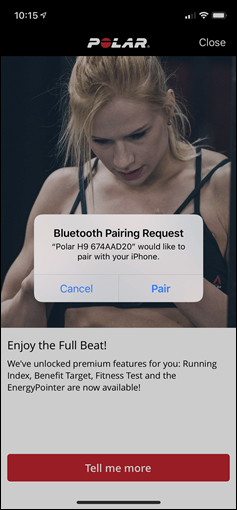
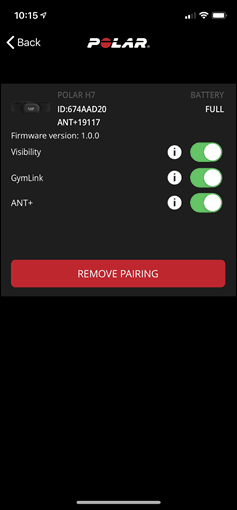


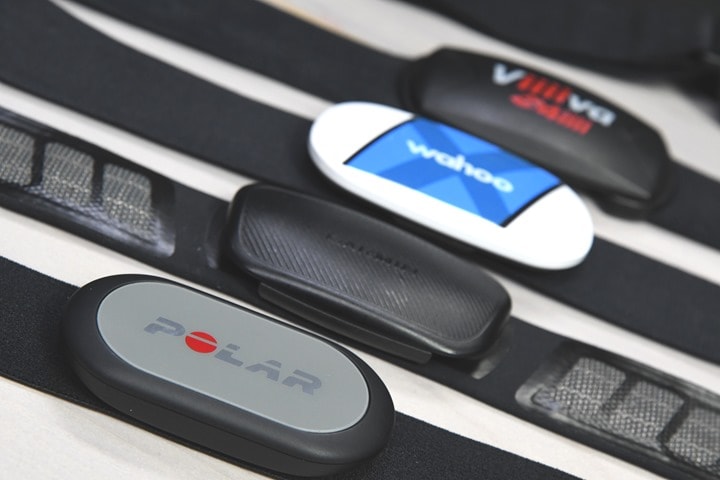
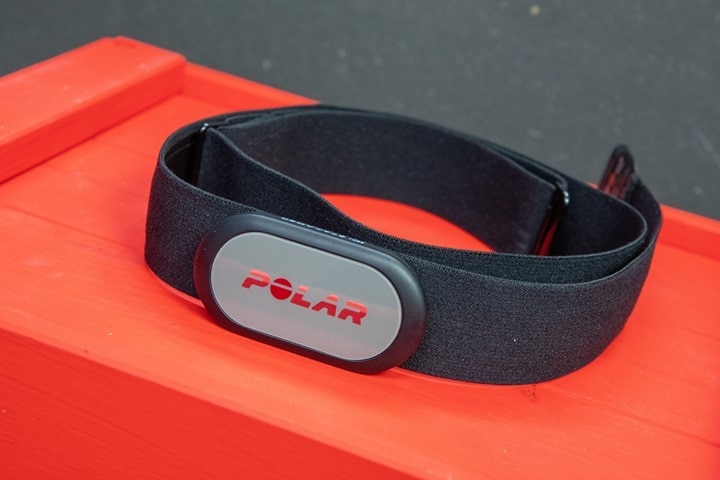
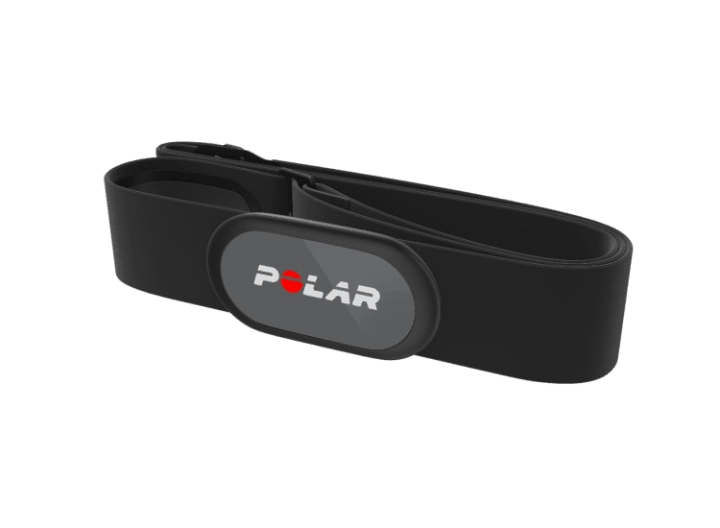
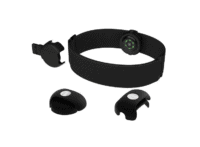

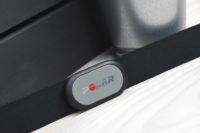





















Will it work with previous Polar HRM soft straps? I have a bunch so would be good. It looks the case from the pictures and previous Polar history
It is same soft strap as previous versions that came with H1, H2, H6, H7 so you can make use of your existing inventory
Thank you David very helpful
I am really disappointed in the HR sensor in my Apple Watch series 5. I have been considering a strap. Would I be able to use this one with the Apple Workouts app on the watch or will I be forced to use the Polar app to get the strap data?
Thomas, the H9, H10, OH1+ will all pair to your Apple Watch and you can use any fitness app as long as it has HR functionality
Polar, please activate the ANT+ in the Vantage series.
Someday I wish upon a star…
In the H10 you say it doesn’t do Dual Concurrent ANT+/BLE but I’m pretty sure mine does ;-)
Why do they not do dual BLE in the OH-1…. Or as the OP said here, enable ANT+ on the V….
That’s funny, literally three seconds before your message came in I noticed that too. Holdover in the database…fixed!
+1
And the V650!
I used polar HR sensor for many years and loved all of them. Used with old polar watches, then he M400 and then with my ambit3 and also wahoo bolt. Always worked perfect!
Unfortunatelly I lost it and I decided to buy a suunto strap. Liked it because it was confortable and very light but never worked correctly, return it under warranty and got a new one,
it worked for some time but after that again a lot of problems. After that I bought a wahoo tickr it’s kind of big and looks cheap but it worked ok for a time… but died just after a year. Then I bought a tickr x ( ok
bought a tickr but clever training like me and send the X ;) ) working ok for a time but lately a lot of reading problems.
I think I will go back to polar and buy this one
Do you know something about Garmin HRM-PRO?
I also would like to know. My 3 year old HRM-Tri strap has seen better days, the amount of electric tape and staples holding it together can attest to it. I haven’t bought a new one since after the HRM-DUAL I thought Garmin might come out with a newer Tri/Swim whatever version. I do like the onboard memory and sometimes use running dynamics so kinda holding on to the purchase for now.
I’m on the same boat. My good old HRM Run 3 seems to be done. I bought a new (Polar) strap recently but my heart rate keeps going up to 180 when in reality it’s just 130/140. I don’t think it’s strap since it’s fairly new. Maybe the problem is the pod itself.. But yeah, there was a rumor for the HRM-Pro last year. It even got listed on Garmin’s Brazilian website for a few hours. Still nothing.
I had the same question since my HRM-Tri had been slowly dying. After I finally went and bought a new one today, Garmin will probably announce the replacement model tomorrow.
Yeah, I didn’t buy a strap during the thanksgiving timeframe since I had read about the HRM-Pro rumours and my strap still had some life in it. It still does, but the structural integrity of it has started going down hill severely :)
Quick update. After reading some old DCRainmaker’s posts about HR straps issues, I bought the suggested electrode gel to improve the conduction during the cold winter runs and guess what? It totally fixed the abnormal HR readings. Amazing. I’m super happy to have it back. I can now wait and see what Garmin is going to release. Until then, I will keep using the HRM-Run 3 with the Polar soft strap. Thanks Ray.
Any experience with this Powerlabs strap? link to amzn.to
CleverTraining needs to fix their search function for “HRM Strap”…the only thing that shows is the Garmin Swim HRM at $100. Dig a bit and Running has a bunch of straps but NOT the standard Garmin Dual. I had to really dig to find that one.
It should not be that hard.
Sigh…search. Agree.
As for that strap, no experience. To me though just looks like a normal dual ANT+/BLE strap. I don’t see any special features beyond that.
Thanks. I have a fried Tickr and several fried Garmin Duals…looking for something less $$.
If you have a Decathlon in your area then they have a dual Ant+ / BLE strap as well. Goes for about EUR 35
Seems to do the job quite well in Zwift or Sufferfest.
The quality of a HR sensor is judged by it’s ability to detect RR timings accurately. RR timings are really important for the propoer function of HRV applications. From those the heart rate is calculated and filtered. Becuse a filter is applied it means that you have differences in dynamics and you may see differences in response but the difference as such is more related to the choice of design and filters and having a stable reading for the customer. The right reference when comparing HR sensors is medical ECG/Holter.
Niclas
Why is HR data from Garmin watches during workouts so poor compared to dedicated optical straps. It’s basically unusable riding outdoors or indoors on the ERG and only OK for directional data on the indoor trainer or treadmill (but completely useless for hard intervals anywhere). Is it purely the location on the arm as I am assuming the sensor tech is not that much worse?
I’m actually surprised at that ride – usually it’s mostly passable for me for indoor rides.
The dedicated optical sensors that are further up the arm is simply a much better place to measure it. I can just about guarantee if I strapped the watch up there, it’d be just as good. It’s just a really good place to measure HR.
Just wearing my Garmin further up my forearm gives me nearly identical data to my chest strap. Wearing any watch on my wrist (just above the wrist bone) is hit and miss. I always thought my Scosch Rhythm just had better sensors. But when I started wearing my FR245 at the same location on the arm, they are basically identical.
Any plans to ever evaluate the Whoop strap, or is that outside of your normal wheelhouse? I love mine, but would love to see you put it through your paces. I know you mentioned it the other day, but I’ve never seen an analysis of it.
Definitely. Might even make it onto my wrist tomorrow if I remember. Been sitting on a shelf since summer when I bought it.
Ray,
You may have answered this question from a previous post. Is there any difference in Bluetooth vs. Ant+ when it comes to signal strength? Does one have a tendency to drop out more than the other? I suppose hardware and signal strength can differ unit to unit so it can be a “it depends” kind of answer. I ask this because with Garmin supporting Bluetooth connections and more units supporting Bluetooth is there a noticeable differences between the two formats?
Thanks!
Do you think the Polar brand still has a marketing edge when it comes to heart rate, or are consumers largely unaware that Polar has been doing this for decades more than everyone else, that they work with pro sports teams, that they’re the only wearable company that does their heart rate metrics in house instead of licensing, etc.?
Polar was late to the Ant+ scene so Garmin took over and Wahoo is making headway. I do not know about anyone else but I find BT to be flaky and limited in distance and connections.
Polar made a bad business decision.
Technically speaking either can be about the same range. Heck, some drones are even doing some crazy Bluetooth control these days. Meanwhile, I’ve seen some ANT+ tests across an entire football field too.
However, practically speaking it’ll vary wildly on the exact implementation on both devices for transmission and reception. Between the HRM-DUAL and H9, I haven’t seen any material differences in normal usage. Perhaps I’ll drag out the NPE WASP and take a look at signal strength. But since I’ve lost over an hour of my day already to fighting other connectivity issues, I’m kinda over that for this Wednesday. :)
Ant+ is (IME) much more robust. BT may or may not connect. I have an Apple 4(?..latest) TV and it has trouble locking on my Snap much less my Tickr (when it worked) at 20 ft. Plus the limited connections…
Note: Standard setup is laptop w/Ant+ (usb dongle) connected to Zwift+Snap(G1)+Garmin Speed Sensor+PowerTap P1
I double the connections to my Fenix3.
I would be interested in a BT scenario that can duplicate my current setup.
Do you know if the HRV data is valid over both BLE and ANT+?
I’m assuming yes because the previous Polar straps are.
It turns out the TICKR only gives valid HRV data over BLE, this becomes an issue because I believe the HRV data is used for First Beat metrics on the garmin watches. So that means you should pair your TICKR to your watch over BLE, but then you’ve exhausted your BLE connection so you can’t also pair it with your phone/tablet etc.
Re: TICKR & HRV over ANT vs. BLE, that concurs with the Elite HRV compatibility chart (assuming both TICKR and TICKR X have the same limitation.)
Yeah I found out from an HRV4 forum I think.
I noticed it myself when I did Garmin’s “HRV Stress” activity. The results wearing the TICKR connected with ANT+ were totally different than my stress score derived from the optical HR built into the watch, but the results from the TICKR connected over BLE were basically the same as the OHR results.
And the difference was large, with one saying I was very stressed and the later saying I was relaxed.
Ray is it a typo error when you said that the pod uses a CR2025 battery? I thought pretty much all the HR pods and sensors use CR2032 batteries?
No typo, H10 uses CR2025 as well.
Shoot! Is that why my trusty old H7 stopped working? I stuck a 2032 in it. :(
You can use a CR2032 in the Polar HR straps spec’d for a CR2025.
They’re both 3Volt coin cells – the last two digits are thickness in 1/10mm so the 2032 is only 0.7mm thicker – fits easily, doesn’t interfere with closing the battery door.
CJ did you try this with the H10 already? Don’t you have to force the battery in and risk mechanical damage to the contacts?
Yes, I’ve done this with an H10, for several months now.
No, no mechanical damage – the contacts are flat metal tabs with lots of give.
I have been using the Polar H10 and love it. I assume the H9 will be just ask good. I have never used the data save feature of the H10, so smart to offer a lower priced version for folks who do not need.
Just out of curiosity – are there still not really any standards for recording heartrate then uploading later?
I love my Garmin FR 935, but I don’t love the Garmin swim at all. Would be awesome to have the best of both.
Sorry if that’s a dumb question – here’s hoping anyways (someday if not now).
Thanks for the fitness tech news as always
My F6X records swim hr from the ohr. Works pretty well and useable for me.
Recording swim heart rate data and uploading later actually is part of the ANT+ standard.
link to thisisant.com
However it seems most other heart monitor manufacturers haven’t implemented that feature.
Longtime H7 user, then TICKR when Polar died after many years, but plan to go H9 now.
Polar strap never had a problem with creeping. TICKR does all the time when hot and sweaty so either it’s slippery or loosens up on its own.
Same experience. I was thoroughly UN-impressed with the Wahoo Tickr, despite all the rave reviews. Uncomfortable strap (kept slipping down), connectivity issues, HR accuracy issues.
Garmin straps kept dying on me (despite keeping them clean).
Polar H10 has been solid, the strap is the most comfortable I’ve tried, and it doesn’t require tools for a battery swap. Independent testing against medical-grade ECGs shows it’s the most accurate HRM on the market.
Another note: the Polar HR straps *will accept* the more common CR2032 battery.
Since it supports 5kHz, will it work for swimming activities ? ? With supported watches of course.
Yes, with the right/compatible watch.
Why do chest straps wear out? I’ve been always washing mine after workouts but sooner or later they all show bad reading in the end, although visually they’re fine.
Why is that?
Salts from sweat accumulate in the fabric of the sweat, providing an alternative electrical pathway for static electricity and false readings.
Regular washing can reduce the rate of accumulation somewhat, but not 100%. Depends a bit on how hard (ie. mineralized) your water supply is.
Also pool chemicals (and sea water salt) affect the electrodes over a time even washed/rinsed afterwards. I have H10 (about 2 years old, extensively used so it has received good dosage of both sweat and pool treatment) and it is still going strong unless I take it to the pool or sea. It nowadays fails after one, two minutes on pool/sea water. It used to work in pool, but has lost that capability over a time. But, the strap still works perfectly for lake swims (~80km/y) with V800 and of course for other type of activites besides mentioned pool/sea swims.
For those purposes I use strap and device from Garmin ecosystem, FR935+HRM Swim combo, which seems just work even after two years worth of pool/sea swims (~ 60km/y) – at least the strap side, FR935 has been replaced once for broken barometric altitude sensor.
What is excellent in the Polar solution is that I could restore H10 back to mint condition just swapping my somewhat damaged strap for a new (~25€) and clip the old sensor/transmitter bod to that. The bod unit is still like a new after two years regular use.
Just a note that I appreciate the pod + strap approach that allows strap replacement while keeping the pod. Garmin has transitioned toward a combined pod/strap that can’t be separated. Once the (consumable) strap wears out, your (relatively) expensive and absolutely polluting electronics go to the landfill. The replacement depletes your wallet faster than replacing just the strap, too. Hate Garmin for this strategy, so I’m pleased to see that more environmentally and financially friendly designs continue to be developed…
True, but it also goes both ways.
The reason Garmin select this option is also that it actually reduces pretty common chest-rub/cut issues. By making the pod smaller, it minimizes the chance of the strap cutting in on people. However, the HRM-DUAL isn’t designed like that. Only the HRM-TRI/HRM-RUN/HRM-SWIM straps.
Here’s a much older post explaining that (which happens to many HR straps, including Polar): link to dcrainmaker.com
Well, sure, but designing a non-chafing chest HRM does not *require* the transmitter to be permanently affixed to the strap. Wider strap (with snaps), placing the transmitter higher than the strap midline, redesigning the transmitter…all possibilities and compatible with a replaceable strap. Heck, we don’t know (yet) about the chafing from the H9, but it looks as if the transmitter extends to the bottom of the strap (or below) – and I’m guessing that the physically identical H10 is the same. But the transmitter looks to be more rounded (at the bottom) than the Garmin. I’m not saying that a better, less chafing design is needed on the Garmin side. It’s just not clear why such a design requires a transmitter that is not removable from the strap.
Hi,
What about some information regarding swimming? Does it work? Can i broadcast this data to the FR245?
Is it comfortable?
Thanks!
For swimming it’ll work with any watch that accepts the 5kHz analog signal, which is these days almost no watches. Polar themselves stopped making watches that work with that back with the V800. The Vantage series doesn’t accept that signal type anymore.
Garmin unfortunately never accepted that signal type.
The strap is comfortable for me, but I didn’t try it swimming (simply because there’s really no modern watches that work with it).
Garmin added the ability for the 245 to record heart-rate data while swimming in September of last year. Perhaps you were aware and just prefer to use a chest strap…
P.S. That reply was intended for Amit, not Ray, for goodness sakes.
Replacing the battery on the Garmin strap with the tiny screws is a pain. This looks much easier.
Side note on H10 usage of on-board storage versus H9 and any other non-onboard HR strap models. I’m (still) hanging on to Polar for now (until my 2 v800s die). I wear an M430 now for “daily-tracking” and then depending on workouts, have made good use of the H10 for a specific reason.
I do running, crossfit, biking, triathlon, volleyball, and other sports.
– For running, biking, swimming, the v800/HR(x) (have 7, 10) work perfectly, and having the 5khz for in-water swim tracking is great (unique for those not-in-the-know to Polar, it can actively track in water with the appropriate watch to receive it (nearly any previous-gen Polar sport watch (not loops I don’t think), but no current models support the radio anymore. Anyhow…
– For volleyball, wearing a watch gets in the way (interferes with bumping), so I use the H10, start recording at the beginning of the event, and then stop it at the end (via cell-phone, wish they’d add that capability to start/stop on-sensor recording via v800, but I know all dev ended on that years ago).
– For Crossfit, sometimes we have running segments (where I want to track GPS distance), and sometimes we don’t (and although the v800 is so incredibly accurate, enough that even indoors at our box I can see my movement patterns under the roof including when I go to get weights, etc).
But sometimes we do movements like kettle bell overhead lifts that bang onto the wrist (and hurt with a watch, and might actually damage the watch), and when we aren’t running, I don’t want a wandering blob of GPS tracked, along with elevations (barometric) that make no sense (pressure changes from AC, doors opening/closing, etc). Because Polar doesn’t allow you to have “2 variations” of the same workouts, with different settings (one GPS crossfit, one non-GPS crossfit workout), and can’t change it on-the-fly on the watch, if I want to have a workout without GPS, it involves jumping through the application and syncing the changes to turn it off.
But since I just want HR tracked, and can again record on just the H10 (no GPS), I can just leave the watch in the workout bag and turn on the on-sensor recording as needed.
So those are a couple of use-cases where the H10 on-board storage does come in handy. An OH-1 may be suitable as well, but it’s not going to be as accurate as a chest strap even though it may be the best in OHR accuracy, and “nearly” as accurate, most reviews including here, still show the occassional lag where whatever algorithm doesn’t quite keep up.
Just a few thoughts, I agree it could be easier to trigger the process, OH1 takes the win for that at least.
Thats great Ray but have you heard from Garmin about whether they’ll be bringing Bluetooth broadcasting of HR to the Fenix 5 Plus? :)
I just think that their decision to stop updating a watch that is barely 18 months old is a bit shitty of them. What do you think?
Thanks
There’s no plans that I’m aware of.
It sucks they aren’t adding it into that lineup, but I wouldn’t be surprised if there’s some chipset limitations there actually. Not sure entirely, but I suspect there may be.
They did however release a firmware update this past week to add support for more Di2/eTAP shifitng options, so all is not dead. They have added a number of features since launch, including bits like SwimRun support and such. link to www8.garmin.com
Since watches now use HRV data for things like recovery or training metrics (for example firstbeat metrics), it would be great to see how HR strap compare on intervals rather than just heart rate values. Obviously this requires an ECG in a medical facility, but it would be great to see how accurate HR straps are in this regard.
I heard that optical HR measurements for HRV are mostly wrong, it would be good to have some independent tests of this, as the training metrics for which we pay so much for a high-end watch may not be accurate either.
Polar straps are generally considered RR accurate and there are scientific validation out there if you look. Therefore, Polar is usually what is used in universities and research facilities. If you have a look at images from the Apple research lab you noice that they use Polar.
Hi DR,
There are two (for me) critical things that are to be checked / included in the comparison:
1. Is HRV broadcast on ANT+ and / or BT channels (concurrently). Viiiiva and H10 do, both TickrX and Scosche Rh+ don’t on ANT+.
2. Is the optical HRM stable under synthetic shirt/sleeve while running (moving). My Scosche Rg+ throws garbage.
Cheers,
Which features can I expect to work with a Garmin 645?
I am especially interested in Lactate Threshold, which in principle should work since HRV is supported.
But probably no Running Dynamics.
Can anyone confirm?
Haven’t have a good run with HRM. First had the Garmin strap with 510 but stripped the tiny screws changing battery. Then got the Wahoo Tickr but the metal electrodes snapped clean off just months after warranty. Might try my luck with a Polar.
Sam,
I’ve had similarly bad experiences with Garmin HRM straps (I’ve gone through half a dozen – stripped screws, pods just up and dying for no reason, since I never swim with them and keep them clean).
Wahoo Tickr: I don’t get the love. Tried, found HR accuracy lacking, connectivity problematic, and the strap uncomfortable and tending to slip down.
Finally switched to a Polar H10 and it just works with everything, including Forerunner and Fenix watches. Independent testing against medical EKGs say the Polar is the most accurate on the market, and the strap is super comfortable, with those rubber dots keeping it from slipping without having to tighten it.
I got an Polar H10 , brand new from Amazon , fully charged and have it own tight, moistened and accuracy is very questionable it spikes 30 beats just from standing up, continues to climb 20 more while other monitors show heart rate moves up 4 beats and is stable. idk maybe I got a lemon, hmm there are 405 negative one star reviews on amazon are 18%
Hey, and thanks as always for the info.
Long term tickrx user and there is one running stat I use all the time recording to my Samsung phone (bought for ANT, but used with Bluetooth…) – not won a voucher on a giveaway to grab a watch.
I used the wahoo app even before Strava removed heart rates, and it cheerily updates me on my cadence as I go. I assume this doesn’t have that, lacking the accelerometer?
I have been Polar user for 3 decades. I have A300 watch for tracking swim workouts. It still does a better job with the T31 coded strap but the H10 usually works. Sometimes I want to just store the workout in the H10 and there is a frequent glitch so the workout won’t get to the iPhone Polar beat. Polar support on this has been spotty. They tell me it’s a glitch they have been trying to fix. And their Bluetooth on and off rigmarole is not reliable either.
Seems like a step backwards to not offer the workout storage feature in the H9. But something makes me think the H10 storage doesn’t work reliably(my experience) so they are discarding the feature. What say you Polar?!!
One would think that once the chip is built to store the workout it would be cheaper to keep the feature than to develop another device with less features.
And I notice even unclipping the sensor from the strap the batteries run down quickly on the H10. Like 6 weeks and it needs to get replaced.
Battery life on H10 is woeful. Unclipping, as you say, makes little difference and I’m lucky if I get a month from 1 battery. However, the massive advantage Polar has is the design for replacing the battery. Try replacing the battery on the Garmin HRM dual and I can guarantee you’ll strip the screws…. It’s clear that whoever designed that product has never used a HR strap. You don’t need a screwdriver and an engineering degree to replace the Polar battery. ?
I would love to hear from Polar about the H10 battery life. Glad you agree about it. Yes at least easy to replace. Maybe I will try a 2032 battery. I hear they fit. And perhaps it will last longer.
I bought the H10 three months ago and Polar Beat reports the battery as full, but I’ve disabled ANT+. dual BLE and visibility. After a run I hand wash it after disconnecting the sensor from the chest strap. Firmware version 3.0.56.
I use the H10 with Polar Vantage V.
The battery life you’ve experienced is not consistent with the performance with the product. We would recommend reaching out to Polar directly for input on what the next steps should be.
As for the battery itself, please use the recommended CR2025 size. – MikePolarUSA
I think there’s plenty of people reporting similar battery life to conclude that approx 1 month of use is what a user should expect out of the recommended battery for this device. Adding dual BLE and Ant+ has clearly massively impacted expected battery performance.
At least Polar make it easy to replace the battery.
have to say that Polar support isn’t great.
I have had syncing issues with the Save HR to sensor feature.
Multiple calls before they finally admitted it was a “Known issue” but that didn’t stop them from making me re do things over and over again. It’s still not consistent.
And my battery on the H10 dies within a few weeks. I disconnect it from the strap when I am done.
I have tried different brands of batteries.
Clearly this is not a “one off” problem.
So I will call, they will have me check my firmware. Done. have me do a reset with the electrodes, Done.
And then send it back. And one time I sent my back, it got lost, and that was money out the window. And they charge for the replacement when it gets sent back .
similar issue. battery dies after 2 weeks. Polar support has been terrible. 2 replacement units had the same issue. i ve been trying to trouble shoot the problem witrh polar representatives, but to no avail
Agreed get about a month to 2 months max of battery life…
I own both a Wahoo Tickr and recently bought a Polar H10. For me, the H10 is much more comfortable and it stays put vastly better than the Tickr. The Tickr constantly loosens up and slips down, even mid-ride. The H10 is rock solid and the strap is first-rate. I don’t use my Tickr anymore after buying the H10.
Hi Ray,
I’d wish you compared it to the Suunto Smart Sensor. No problem: I’ll do that:
Polar H9: works.
Suunto Smart Sensor: Doesn’t work, hasn’t worked for years and will never work. And they charge you €80 for that thing. I me idiot own four of that faulty by design pieces.
I ended up buying a H10, too bad it’s internal storage doesn’t work with the Suunto watches which I like very much, as a triathlete I’d like to have HR recorded in Water and still use the belt instead of the wrist HR stuff.
You can’t tell people often enough not to buy a smart sensor, until Suunto has something that works.
However, since the H9 might have the same chipset as the H10, I’d expect it to be the same great HR Sensor in at lest an accuracy point of view.
I wish they all put their firmwares open source, you then could grab your favourite hardware and make your favourite watch work with you favourite belt in any way.
Bluetooth 5.0/5.1 support?
Do you have made a comparative of Polar HRM? Is H10 really more precise and reliable? And H9? Or H10/H9 has similar measurements precision to previous models like H7 or even H2/H1?
Great review – the Clever training doesn’t seem to accept that code anymore – I always get that it is no longer valid
I’ve got a Wahoo TICKR that I bought in 2014 and use for Zwift (Bluetooth) a Garmin HRM-TRI that I use for Running Dynamics with my 935 and swimming.
I’d love a do it all strap… Supports ANT+ and Bluetooth, running dumanics and swimming (and 5kHz ideally, as I’ve just started using an assault bike at the gym).
It doesn’t appear that this device exists on the market atm?
Can the H9 work with Apple Watch (series 2)? I need live data when jogging (post heart attack).
Is the H9 coded or uncoded 5KHz? I have a Schwinn Airdyne Pro that only connects with uncoded 5KHz heart rate sensors and I’m having a hard time finding something. On a separate note, anyone have any luck extracting data from one of these beasts?
I am pretty sure that a coded 5Khz will work with anything that requires uncoded, But not the opposite, If coded is required, the uncoded won’t work. The only uncoded left is the T31 transmitter. They sell it on Polar USA, probably other places if that’s what you want. They last forever. But its the old school plastic transmitter, not a soft belt.
Does the older harttouch function on V800 and older watches work as well? It worked with with 5kHz.
I used it in cold weather for lapping at the track. Wearing thick gloves. Or used it at nigth for turning on te light.
Don’t believe heart-touch works on Vantage. In the settings, there’s only the option now for taking a lap when you tap the screen iirc.
I have been using the Polar OH1 for cycling and gym workouts for the past 2 years and it works flawlessly. That being said their is a slight delay in the readings showing up on my Garmin head unit as my heart rate changes; sprints, intervals, climbs, etc. Lately I’ve been reading that only chest straps should be used for cycling. Do the Polar chest strap models have the same data delay as the OH1?
Thanks for the post. Do you know if the polar H9 is compatible with garmin watches? I have the Forerunner 45 and would like to buy the Polar H9.
Does H9 device works with Polar Pro Strap from H10/H7? Have you tested?
Does H9 pod works with Polar Pro Strap? Anyone knows?
When you finish the workout, do you remove the device from the strap or leave it on?
Id like to get a HR strap to track HR while swimming. I’d like to pair to a smart watch (either a Garmin Fenix 5 or Coros Pace 2). Id also like to pair to my Concept 2 rower (PM5 monitor).
Looking at Garmin HR swim as well as various Polar products (H7, H10, T-31, etc.). Its not clear to me which of these products allow for live HR tracking as well as pairing to a Garmin or Coros watch.
Any help you can provide would be appreciated.
When it comes to swim tracking, you’ll need to ensure that the strap matches the product manuf. For example with a Garmin watch you’ll need a Garmin HR strap (HRM-TRI or HRM-SWIM), otherwise it won’t download the data afterwards.
Both Garmin and COROS (as well as Polar) though do allow you to use wrist-based optical HR during the swim. In the case of Garmin, you can download the data from the HR strap afterwards (it does it automatically), but it won’t read from the strap during the swim (none of the current products from Garmin/Suunto/Polar/COROS/etc… do anymore). Only some of Polar’s older products could use the HR strap live during the swim.
Thank you very much. I actually care more about live HR tracking than saving the data… i know that for some the data is very important.
Not sure i want to trust the optical HR sensor from the watch for the live HR tracking, but i will test it out with the Fenix 5 and a Garmin HR swim and see how it goes.
Howdy,
Searching for an answer and you seem to cover the whole range of devices. So here goes. I have a Vivoactive 3 watch. I got it after I broke my Polar Ft40 watch. Now I want to add swimming AND get my HR. The Garmin captures swimming, but not HR. I bought a Polar H10 HRM. But the H10 has yet to capture HR when I am in the water. I also run my Garmin to capture distance. Is there some inherent miscommunication for these 2 devices? Been trying for 1 month – all out if water-only a swimming problem. Hope you can HELP me!! Thx!
Carolyn
I pic on land, I in the pool
Correction: Polar H10 all good on land and in concert with Garmin Vivoactive 3. The problem only occurs in the pool. Pic 1 of test before swimming, Pic 2 is the actual swimming event. No HR except when I start or stop Polar Beat.
Hi Carolyn-
Indeed, you’re in a bit of a pickle there unfortunately. Neither ANT+ or Bluetooth Smart can transmit through water more than about 1-3″ (a handful of CM). It’s just a limitation of digital transmissions in water. Older Polar straps used an analog frequency that transmitted through water, but none of Polar’ recent watches support that anymore, since most of them can use the optical HR sensor in the water.
Similarly, most of Garmin’s more recent watches can use the optical HR sensor in the water, though, the Vivoactive 3 might be just beyond that a bit (now a touch over 2 years old).
Unfortunately, there isn’t any good solution for you here if you want to get the swimming data onto your watch. You could still with the H10 record your HR using the Polar Beat app on the H10 and then let it sync/transfer to your Polar app, but there isn’t a way to combine that easily with the Garmin watch data.
Hope this helps!
Wow – thanks for the quick reply. Ok – I can live with that IF the H10 will capture my heart rate on the app. Bummer no Polar device that does it all – in my price range. So, did the fact that I am wearing the watch prevent the H10 from downloading the data to my phone? I do see the H10 show as connected on the watch…
Lastly, I know OHR is what most watches do, but I have SVT and it was captured with Polar strap, but not OHR. I think it is too fast for the LEDs or not a strong pulse. Thus, I want HRM for cardio. I am swimming today, no watch and hope I get data. Otherwise I don’t need the H10. I get all other from.Garmin….I was a loyal Polar fan…..thanks much for your help!!!
one of my issues, too.
The H10 will record HR but you can’t see in real time. However any old polar watch that will show HR in real time. NOT the new ones.
the 5ghz analog “gymlink” signal does transmit through water. I use an old M51 and R200 watch and the A300 works, too.
problem is they don’t have swim tracking. so you end up looking like the DCrainmaker with two watches so it’s a bit geeky
I do find the Apple Watch if tightly strapped does a good job. I can see HR when I look at it.
and the swim tracking is excellent.
lately that’s what I am doing.
Hi Alan,
Thanks for the reply! I just tried swimming again w/ H10 with my android app – still no luck!! Aarghh! I see the same result as before – the beg. and end of my swim but no data from the download. I actually just exchanged for a new H10 thinking it was defective. I guess not! I can live w/o the live data, but no data at all? Really frustrating. Guess I will have to return this one and get something else….yes, and old Polar watch. They really screwed up a good thing. They were the best at HRM….not sure what to think now. Wonder if H9 works for swimming?? Thanks ?!
Carolyn
The H9 is supposed to transmit on the analog signal, but it won’t record the workout. The H10 stores a workout and then downloads to the phone. I had some trouble with that too.
you have to “save HR with sensor” for this to work when you start a session.
it was finicky and I was losing workouts, but I think they got the app all straightened out.
The H9 is supposed to transmit on the analog signal, but it won’t record the workout. The H10 stores a workout and then downloads to the phone. I had some trouble with that too.
you have to “save HR with sensor” for this to work when you start a session.
it was finicky and I was losing workouts, but I think they got the app all straightened out.
Hmm… well that is what I did. Polar had advised that I would see my HR and a device icon which meant it was seeing the transmitter. I click save HR with sensor then stop the training at the endand it “downloads” to the app- but it only shows the beg. and end. I read your prior post- yes I did all the tricks with restart, uninstall, remove transmitter than put back on. They wanted me to send back but I was worried it would get lost in the mail. I find it hard to believe they have not fixed this problem? But I am looking for an old Polar watch- guess I will be THAT person. Or if Polar gets back to me with some other fix. I will keep another week or so, but then moving on. Over a month of workouts and no data….I need a solution. At least I have my Garmin watch.
The analog signal is coded or non-coded? I need a strap that is compatible to T31 or T34 non coded.
Has Ray or anyone else heard of or checked out the Frontier X HRM?
Hi Doug-
Thanks for being a DCR Supporter!
I’ve poked at it a bit on their site, but honestly, I don’t get it. Most watches fill in the blanks that they have red dots for, when used with any common chest strap. And most of those specific items they discuss (like breathing rate), are far better positioned recorded 24×7 than just for a single workout.
It’s just kinda weird to me. :-/
Cheers,
-Ray
Battery drain issues, battery lasts about 3 – 4 weeks. Polar advise removing unit from snap connections after every use (and I checked it also says this in the instructions). But really! Seems like a built in design flaw to me. Surely it should be able to detect an HR signal and switch on/off while being connected to the strap?
I unplug just one of the connections do I don’t lose the pod. I haven’t installed a new battery in almost a year and I use it every single day.
Good call – I’m on it, thanks. Let’s see how that works out.
Ant experience with connecting to a Suunto 9? I just purchased the Polar HR9 and I unable to connect it. GARMIN strap is so uncomfortable I wnt to make a change. Thank you.
“Now one twist on this strap is that like the H10, it actually does retain Polar’s newish SDK functionality. This means that it’s ideal for some of Polar’s B2B partners to leverage for various applications beyond just simple heart rate such as ECG and HRV data.”
Hi Ray, thanks a bunch for the review. I have suspected supraventricular tachycardia (one type of not-necessarily-dangerous heart arrhythmia) during certain high-intensity training sessions, and am looking to confirm this through wearing a heart rate monitor which will record and report a full ECG diagram. According to Polar’s github site (link to github.com) only the H10 supports this. H9 supports only reporting of heart rate and RR interval (HRV). I think your sentence may lead readers to think the H9 will output a full ECG diagram. Thanks again for an otherwise great review, much appreciated.
Can the Bluetooth and 5 Khz be used concurrently? For example, connected to a gym machine (5 Khz) and a fitness device (Bluetooth)?
I already have three HR monitors, none with 5 Khz. But I recently bought a used Precor EFX 5.23 for the winter when I can’t get outside and I want something to worth that and my Garmin Instinct.
I need to use sensor gel for the sensor to work well. Do I have to coat the entire back rubberized surface, or just the “pads” at either end?
Hi there. My H9 is two years old now. Never replaced the strap although had the pod serviced just before the warranty expired. Other than that it has proven good.
However it has been erratically malfunctioning here and there.
For one, it connects to my good old Fenix 5 but it takes forever to deliver accurate readings (on the watch). When it does, it usually “locks” and keeps broadcasting fine with some dropouts here and there. No big deal.
But again, it has gradually going nuts to the point I’m starting to find it useless. It will disconnect plenty of times during a run.
Readings tend to go to the correct point for a while only to steadily decrease until “no zone” is shown in the watch. Sometimes it will resume fine, many many others it won’t. I try unlinking and linking back while in track, it sometimes behaves, many others don’t to the point I get really really mad.
Cleaning (always gently) the strap won’t help
Changing battery (checked over a voltimeter) won’t help also
Putting a little tape in the strap connectors (to prevent moist affecting physical connection between the strap and the pod’s as some nerdy forums users say) neither makes it any better.
The strap looks fine, not eroded, no parts jagged or suspicious of allowing water in. Same for the pod.
Any ideas before I ditch it for once?
Thanks a lot!